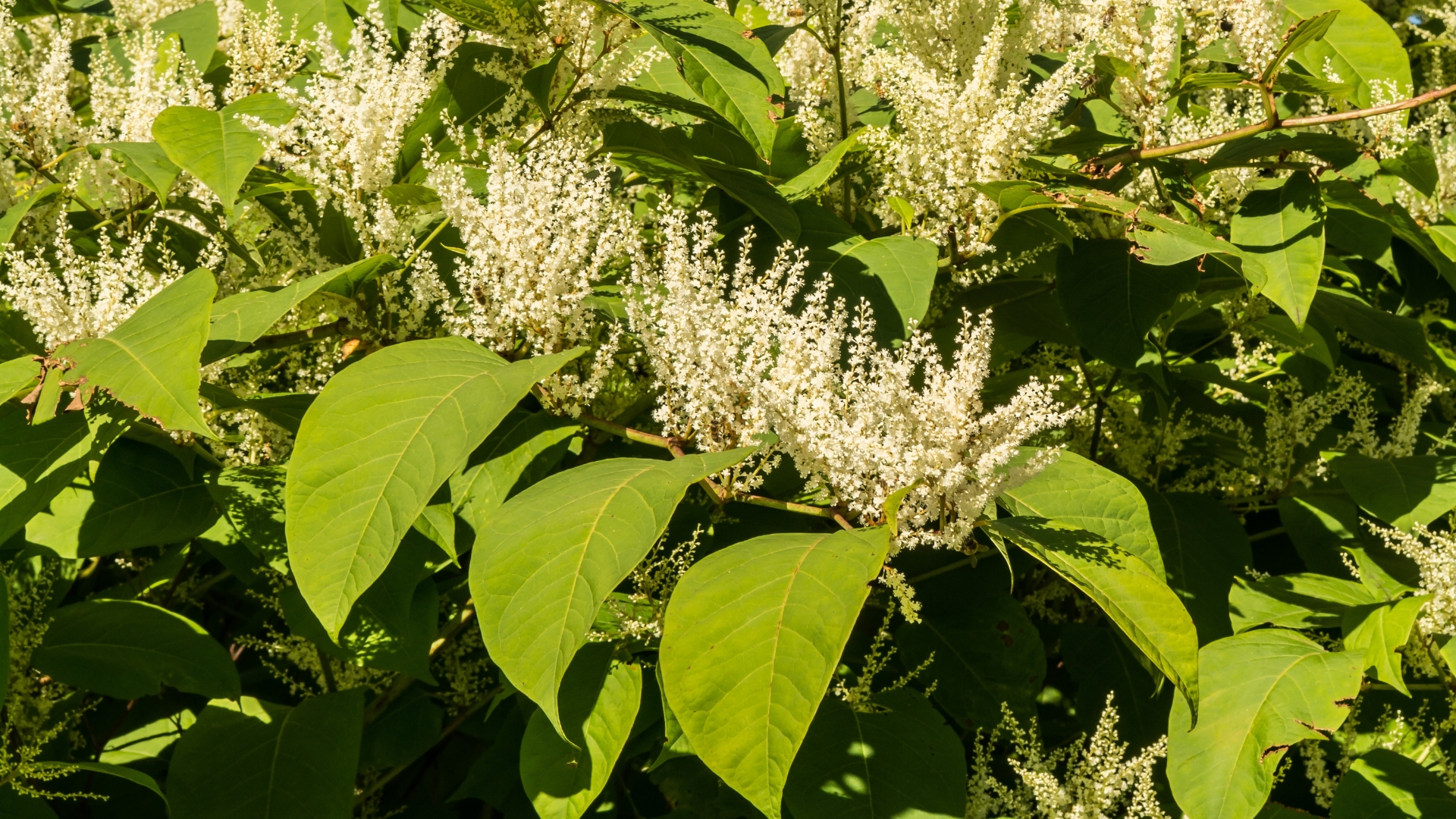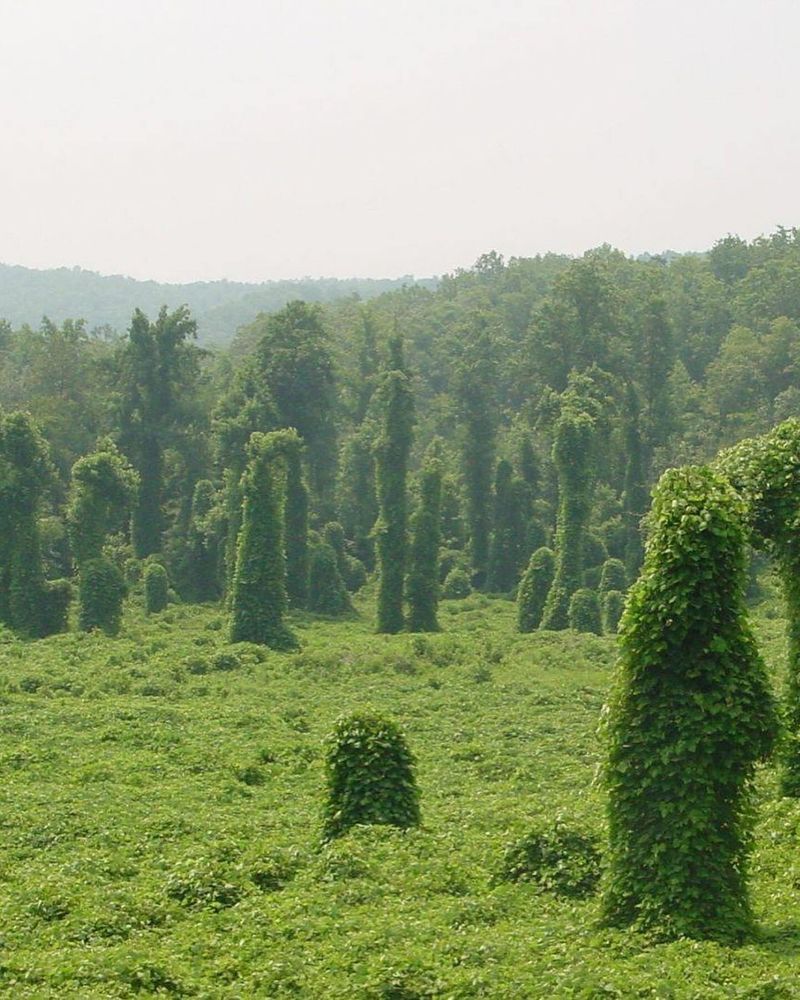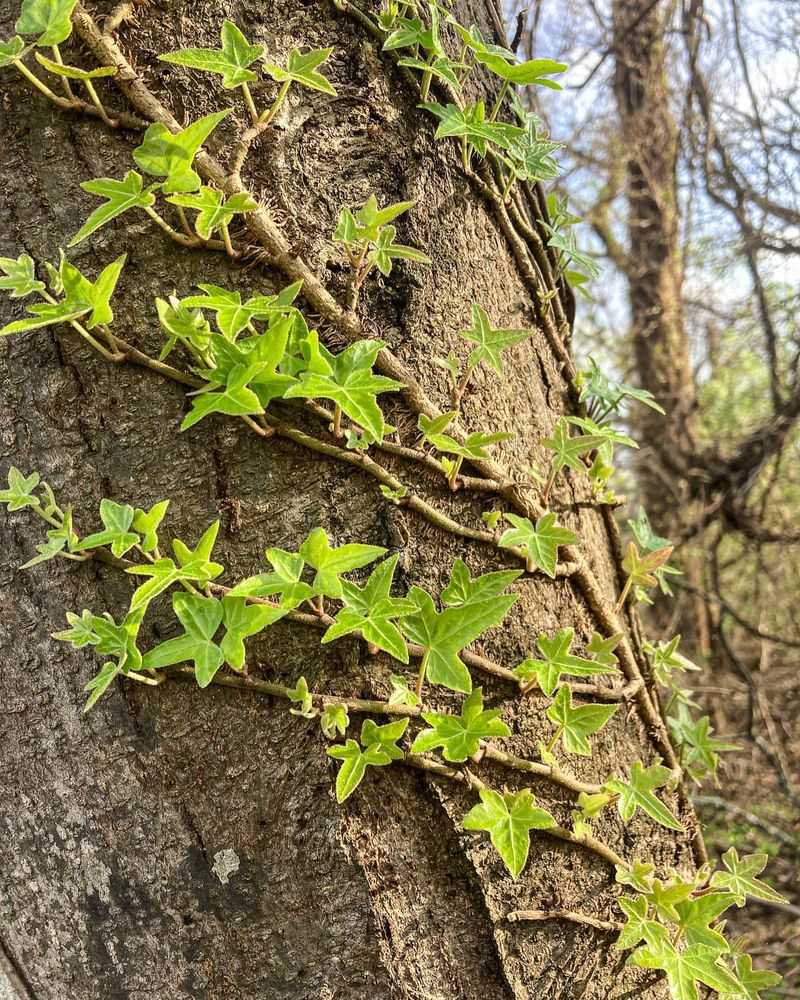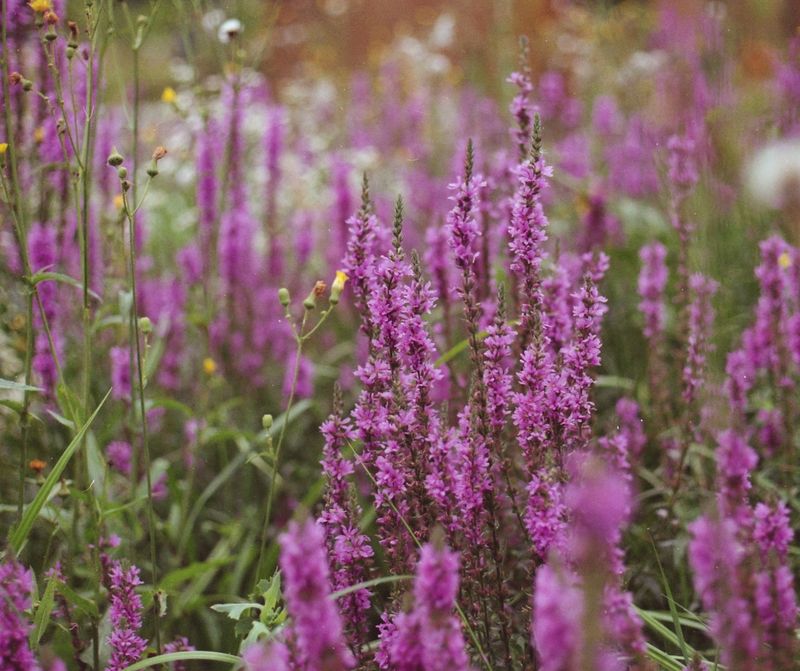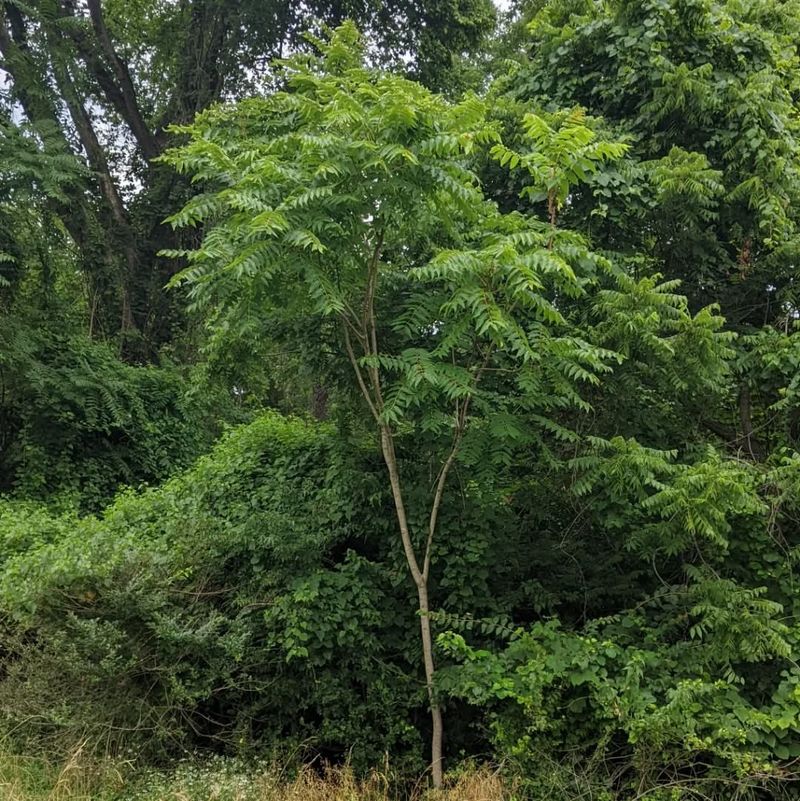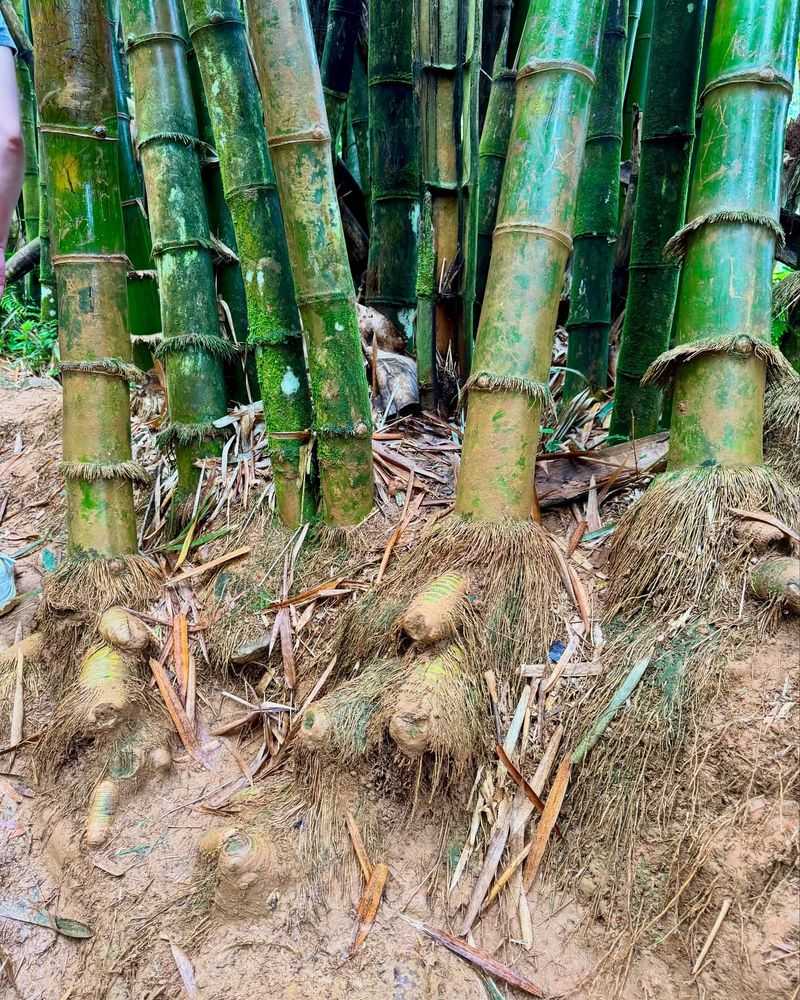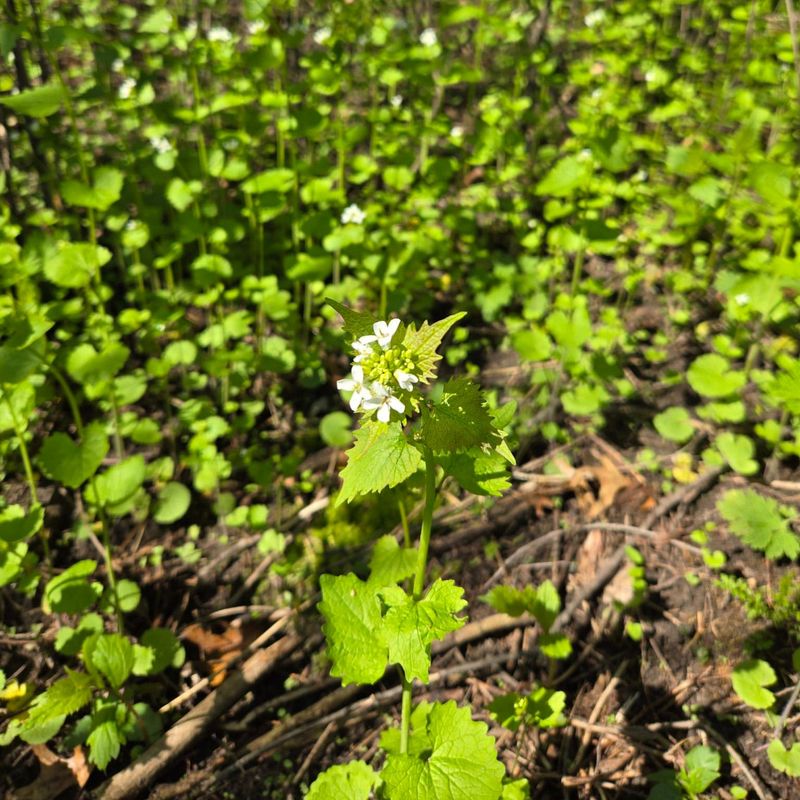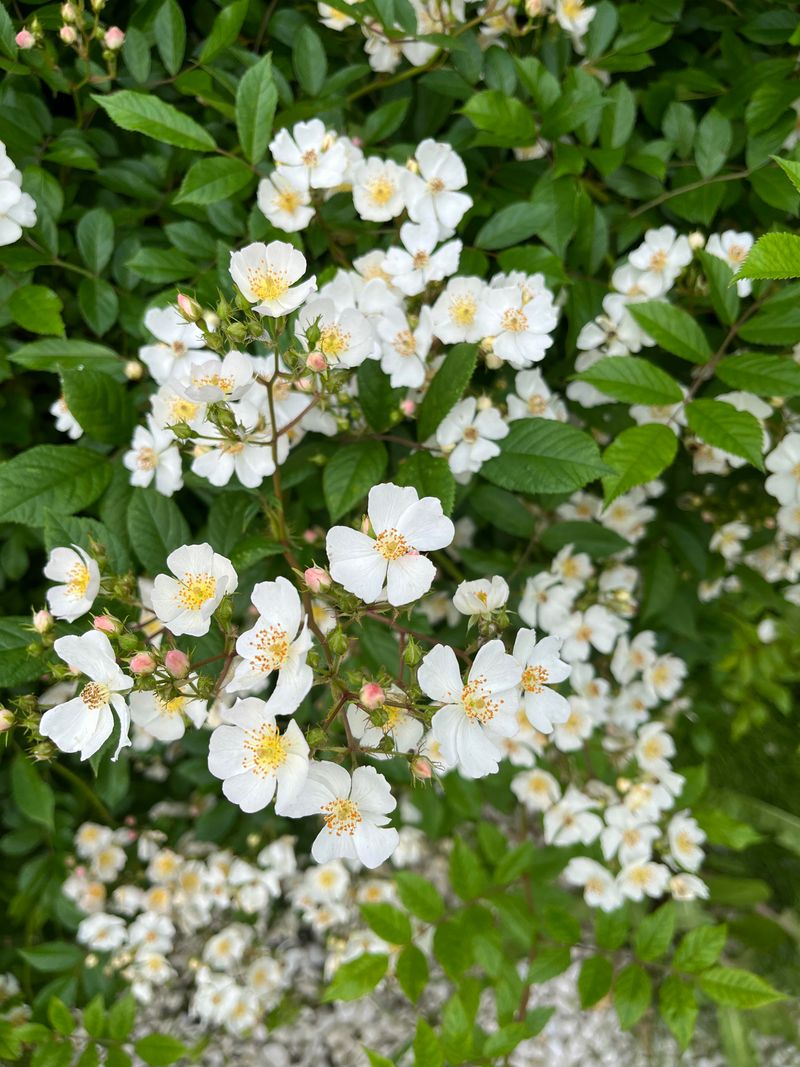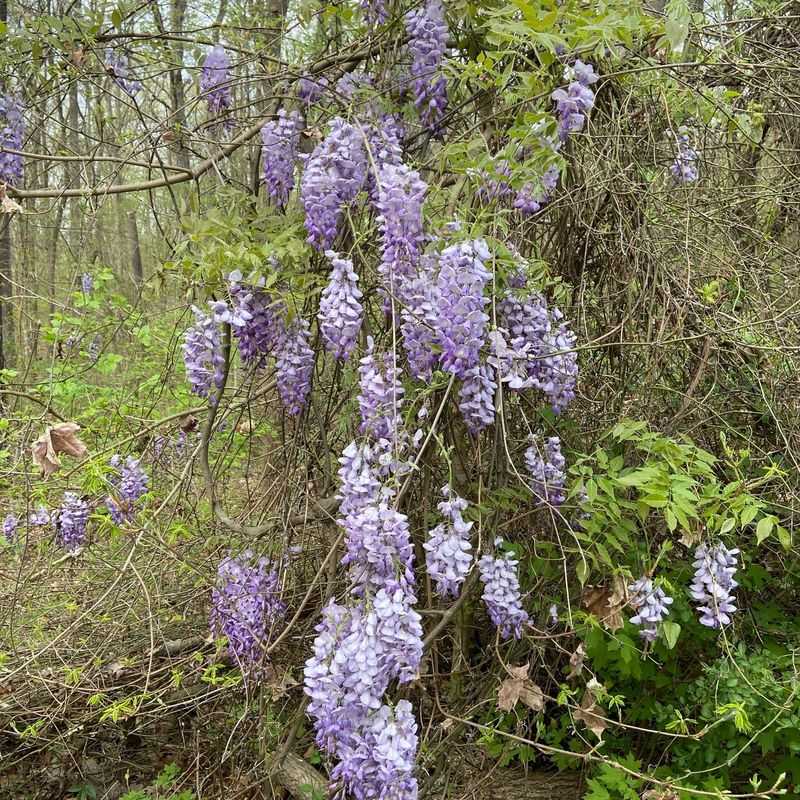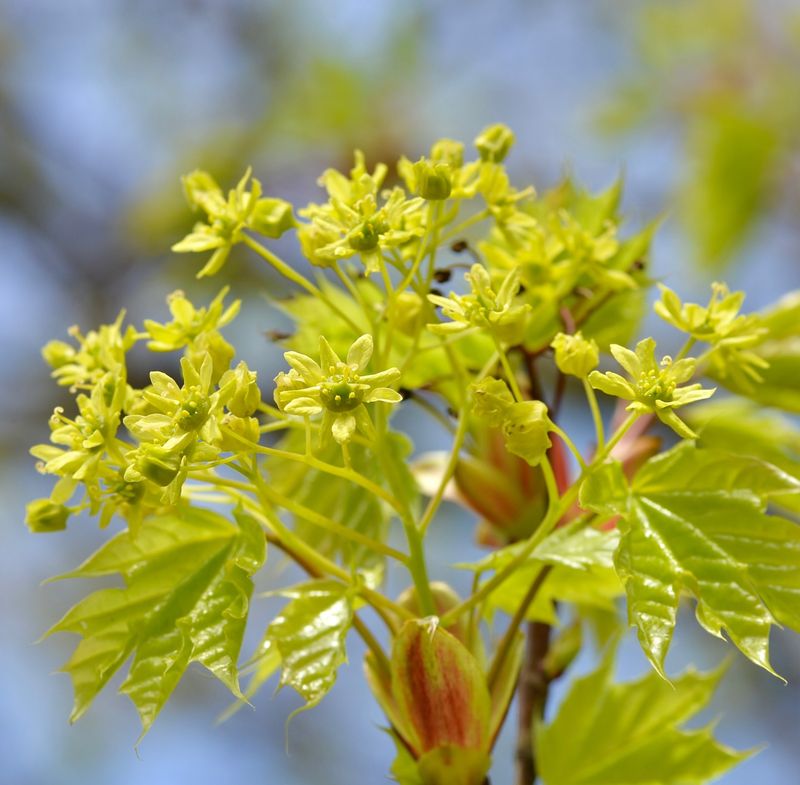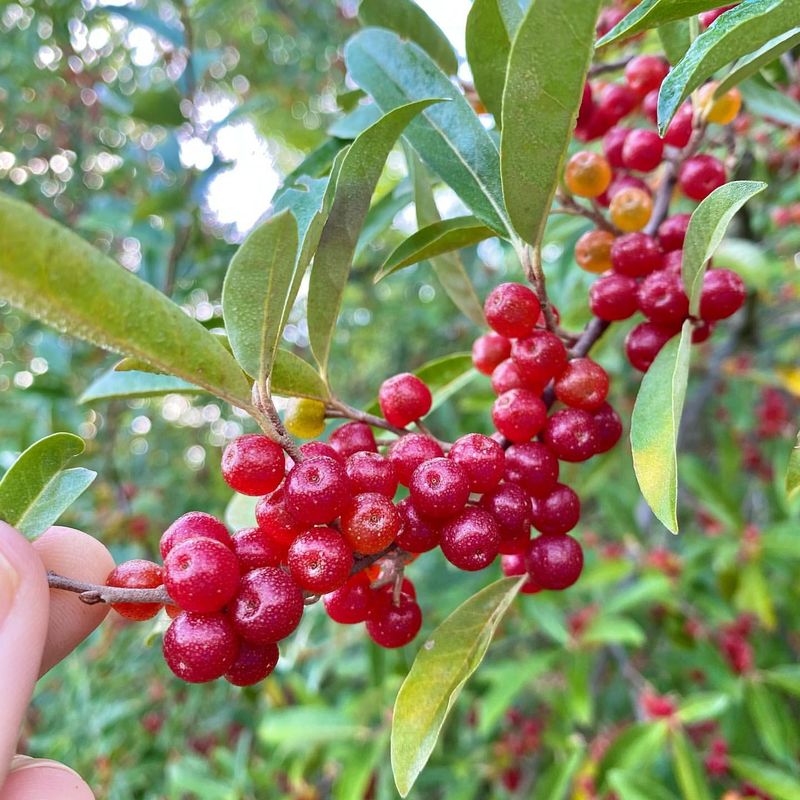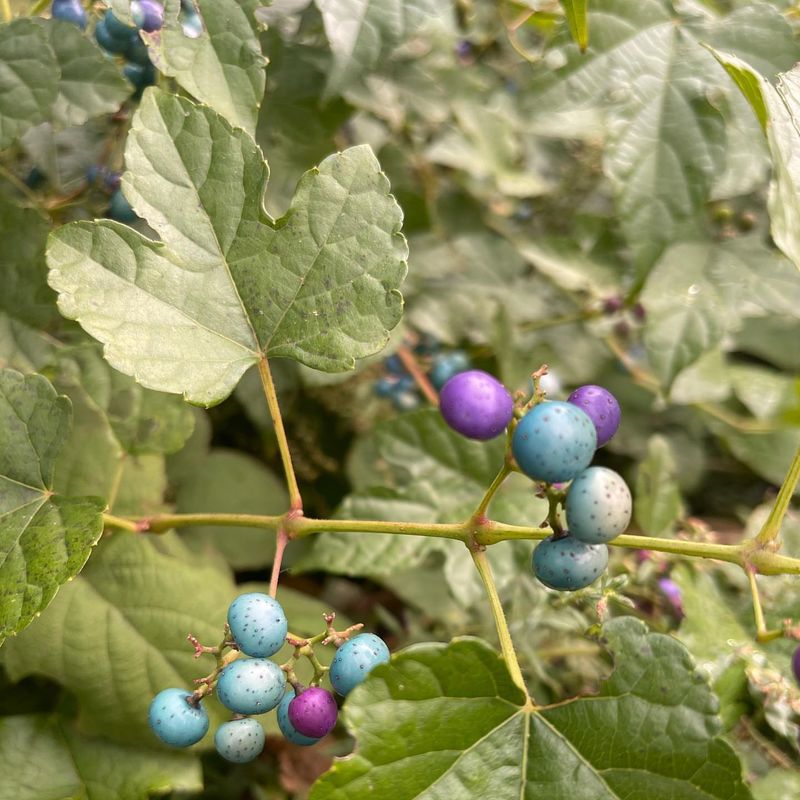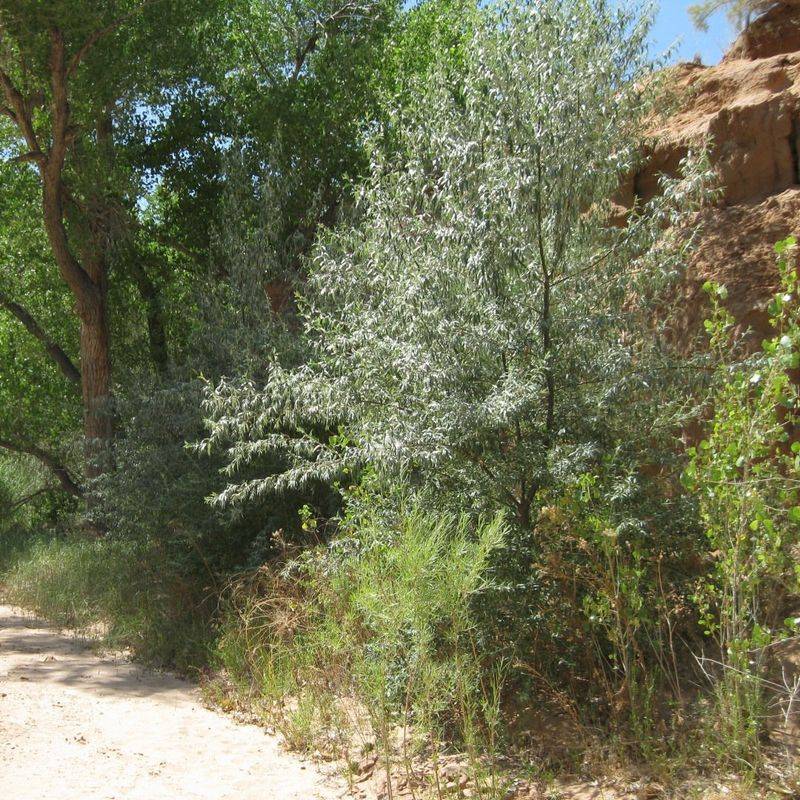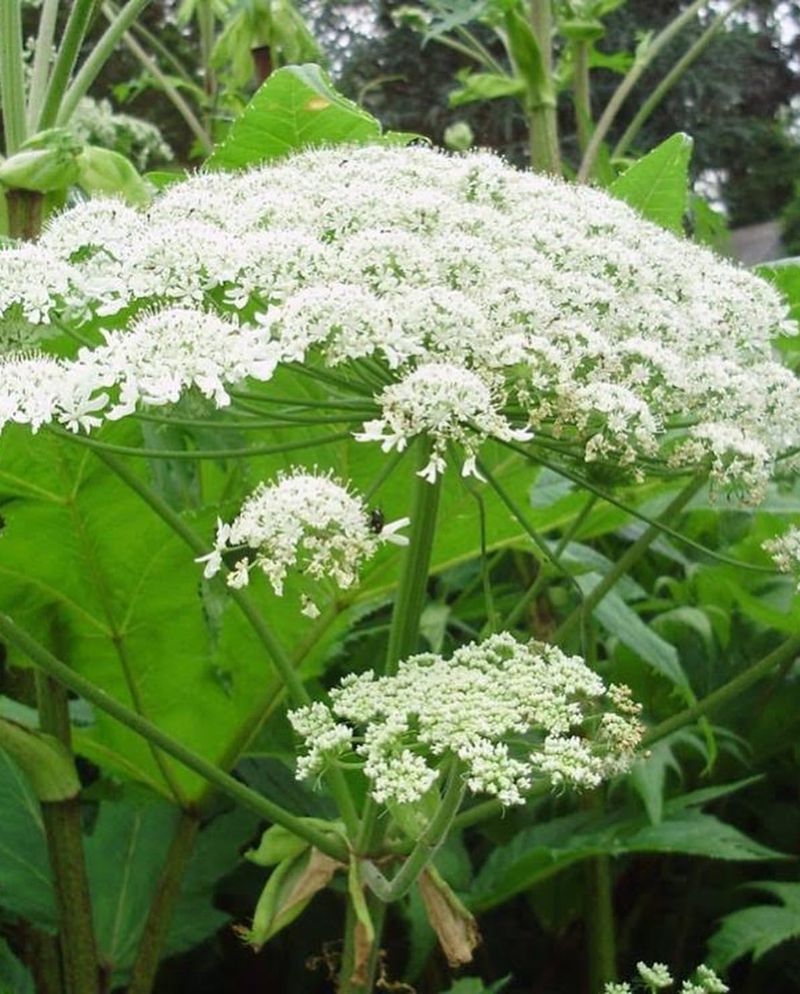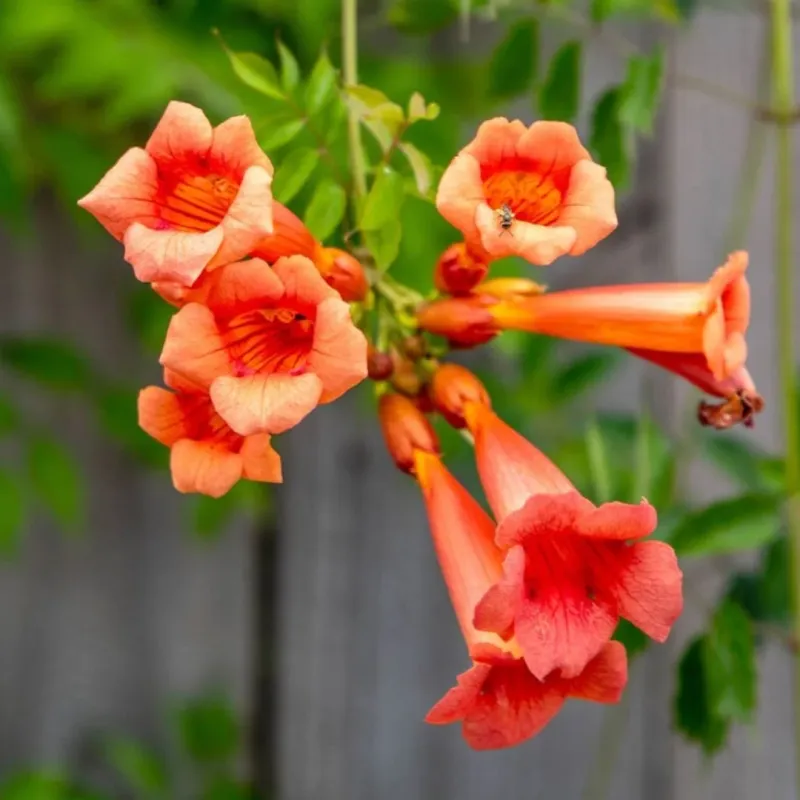Some plants look innocent at first, but they’re actually sneaky troublemakers taking over your yard. I’ve had a few that spread so fast, they nearly swallowed up everything else I planted.
If you don’t act quick, these aggressive growers can choke out your favorite flowers and veggies before you even notice. Trust me, catching them early saves a lot of headaches later.
Time to roll up your sleeves and show those plant bullies who’s boss.
1. Japanese Knotweed
Growing through concrete and foundations, this bamboo-like invader causes property damage worth millions yearly. Its underground stems can extend 20 feet horizontally and require professional removal.
Even tiny fragments can regenerate into new plants, making DIY removal nearly impossible. Classified as controlled waste in many regions, you’ll need specialized disposal methods to prevent further spread.
2. Kudzu
Nicknamed ‘the vine that ate the South,’ kudzu can grow up to a foot daily in optimal conditions. Originally introduced as an ornamental plant, it now blankets over 7 million acres across the United States.
The hairy vines completely smother trees, utility poles, and abandoned buildings. Regular mowing, grazing animals, and persistent herbicide applications are typically needed for effective control of this relentless climber.
3. English Ivy
Deceptively charming on historic buildings, English ivy damages mortar and creates perfect hiding spots for pests. Its aerial rootlets cling tenaciously to surfaces, making removal labor-intensive and potentially damaging to structures.
When allowed to mature, ivy produces berries spread by birds to natural areas. There, it forms dense mats that smother native vegetation and can accelerate tree decline by adding weight that increases fall risk during storms.
4. Purple Loosestrife
Each purple loosestrife plant produces up to 2.7 million seeds annually, creating a beautiful but devastating purple invasion in wetlands. Native cattails and other essential habitat plants don’t stand a chance against this prolific competitor.
Wetland wildlife suffers as food sources and nesting areas disappear under dense loosestrife stands. Some regions have introduced specialized beetles as biological control agents, showing promising results where chemical controls aren’t feasible.
5. Tree of Heaven
Despite its heavenly name, this tree creates a hellish situation in gardens. Fast-growing and producing chemicals that inhibit other plants’ growth, it’s virtually impossible to outcompete.
Root fragments as small as an inch can sprout new trees, making complete eradication challenging. Adding to its problems, Tree of Heaven is the preferred host for spotted lanternfly, an invasive insect devastating crops across eastern states.
6. Bamboo
Running bamboo varieties can send underground rhizomes 15+ feet from the parent plant, emerging unexpectedly in lawns and neighboring properties. Without proper barriers extending at least 30 inches deep, containment becomes nearly impossible.
Removal often requires heavy equipment and multiple treatments. Many municipalities now have bamboo ordinances with hefty fines for allowing it to spread onto neighboring properties, making this once-popular ornamental a potential legal liability.
7. Garlic Mustard
Looking innocently like a garden herb, garlic mustard releases chemicals that kill beneficial soil fungi needed by native trees. A single plant produces thousands of seeds that remain viable in soil for up to 10 years.
Early spring removal before seed production is crucial for control. Pulled plants must be bagged and disposed of in trash, never composted, as seeds can continue developing even after the plant is uprooted.
8. Multiflora Rose
Armed with vicious curved thorns, multiflora rose forms impenetrable thickets that can engulf entire fields in just a few years. Birds spread the bright red hips (seed containers) far and wide, creating new invasion fronts.
Cattle ranchers particularly despise this plant as it renders pastures unusable. Cutting only stimulates more growth, while digging requires removing the entire root system to prevent resprouting from remaining fragments.
9. Chinese Wisteria
Don’t be fooled by those gorgeous purple cascades – Chinese wisteria vines can crush structures with their weight and girth. Mature stems grow as thick as tree trunks, with documented cases of vines completely destroying garden pergolas.
Underground, the extensive root system makes complete removal exceptionally difficult. Cut vines respond with explosive growth, often producing dozens of new shoots from the remaining stump, requiring vigilant follow-up treatment.
10. Norway Maple
Casting dense shade that few plants can survive under, Norway maples create virtual dead zones in forests. Their shallow root systems outcompete native vegetation for water and nutrients while their prolific helicopter seeds ensure widespread distribution.
Fall color comes late, helping distinguish these invasives from beneficial native maples. Young trees pull easily, but mature specimens require professional removal and stump grinding to prevent resprouting from remaining roots.
11. Autumn Olive
Birds adore autumn olive’s abundant berries, unwittingly spreading this shrub across natural areas. Originally planted for wildlife and erosion control, it now threatens prairie and forest ecosystems throughout the eastern United States.
Nitrogen-fixing roots give it an unfair advantage over native plants. Young shrubs can be pulled, but established plants require cutting and immediate herbicide application to the stump to prevent the vigorous resprouting typical of this persistent invader.
12. Porcelain Berry
Often mistaken for wild grape, porcelain berry’s distinctive speckled berries in shades of turquoise, purple, and white make it popular with crafters. Unfortunately, those same attractive berries help it spread rapidly through natural areas.
The vines can grow 15 feet in a single season, blanketing and smothering trees. Cut vines must be treated with herbicide, as the extensive root system readily resprouts when only the above-ground portion is removed.
13. Russian Olive
Silver-leaved and drought-tolerant, Russian olive trees quickly dominate riparian areas and displace critical native vegetation. Their thorny branches make dense thickets that block wildlife and human access to waterways.
Birds spread the seeds widely after eating the small olive-like fruits. Young trees can be hand-pulled, but mature specimens require cutting followed by immediate herbicide treatment to prevent the vigorous resprouting characteristic of this tough invader.
14. Oriental Bittersweet
Holiday wreaths featuring bright orange-red berries have helped spread this destructive vine across America. The colorful fruits open to reveal yellow capsules, making them attractive for seasonal decorations.
Growing up to 60 feet, bittersweet vines strangle trees and can completely pull down forest canopies. The extensive root system must be fully removed, as any fragments left in soil will quickly regenerate into new problem plants.
15. Giant Hogweed
Beyond being invasive, giant hogweed poses serious health risks – its sap causes severe burns when skin is exposed to sunlight. Growing up to 14 feet tall with white flower heads reaching 2.5 feet across, it’s an imposing plant.
Never attempt removal without full protective gear including gloves, goggles, and waterproof clothing. Many states require reporting sightings to agricultural authorities, who may handle removal using specialized protocols to prevent environmental contamination.
16. Trumpet Vine
Hummingbirds love trumpet vine’s tubular orange flowers, but gardeners soon regret planting this aggressive spreader. Underground runners can emerge dozens of feet from the original plant, popping up in lawns and garden beds.
Removing the main vine often triggers explosive growth from the root system. Complete eradication typically requires combining mechanical removal with chemical control, often over multiple seasons, making prevention the best approach with this tenacious beauty.

